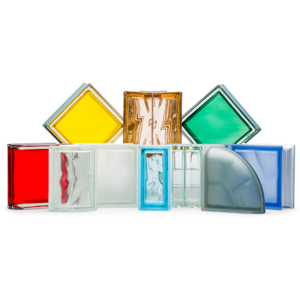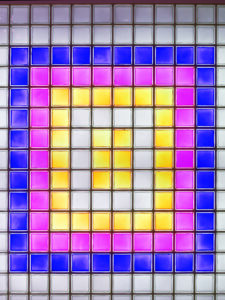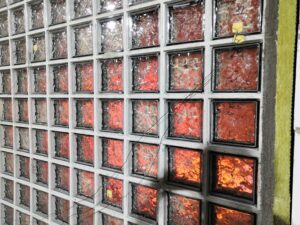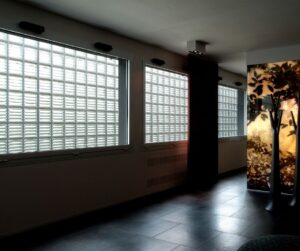Published by: Architizer.com | Sydney Franklin | Aug. 30 2017
Glass blocks are the comeback-kid material of the moment. Yes, they are intrinsically linked to architectural trends of the late ’80s and ’90s, but they continue to make a major statement regardless of a project’s scale or typology. They always have, and they still do. That’s why we’re predicting a serious shift in the specification of more and more glass block–clad projects around the world in 21st-century architecture. Not only do glass blocks produce one-of-a-kind illumination inside a building, they also have the potential to display a bold, exotic and beautiful external aesthetic, as well.
Take Leitão_653 by French-Brazilian firm Triptyque Architecture as an example. A contemporary construction complete with an iconic checkerboard façade of glass blocks, the project forms a compelling precedent for modern-day applications of this classic architectural material.
Completed in 2012, this 4,575-square-foot creative commercial space is set in the bustling neighborhood of Pinheiros in Sao Paulo and boasts a striking lattice-like façade interspersed with glass blocks. The project was designed on a long and narrow plot and built 13 feet wide and 82 feet high. Though created under the extreme physical constraints of the surrounding context, the building’s unique dimensions allowed for the incorporation of this signature glazed elevation.
Triptyque envisioned one of the exterior walls as a massive pixelated design. Using glass blocks by Brazilian manufacturer Margem Projetos, the architects made a playful pattern with varying degrees of transparency on the building’s top four levels. According to Triptyque, the giant panel smooths communication between the city and the interior of the building.
Above: animated diagram of Margem Projetos’ meticulous block-by-block fabrication process; via Margem Projetos. Below: close-up of Leitão_653’s glass-block façade
“Leitão_653 was conceived as a place of inspiration in a permanent connection with the city,” said Triptyque. “The building draws a cathedral light like latticework. Its multifaceted wall absorbs light during the day and radiates at night.”
The architects also describe the building as an urban theater or incubator. It unveils movement and showcases real-life scenes through the glass-block façade but with an aura of privacy. Three different opacities of glass blocks were used to fill in the squares of the façade. Matte glass, transparent glass and white glass each make up 30 percent of the wall. They come together in a grid behind which passersby can view the interior activity in the shape of silhouettes.
With Leitão_653, the courageous specification of glass blocks formed the basis for a light-filled layout within an unusually lengthy construction. Two-thirds of the building can be seen over the low-lying nearby architecture, which, in turn, allows direct light to shine into the building via the north façade. This diffused light is considered ideal by architects because it creates a soft and consistent glow for users to work in while also maximizing solar heat gain. In a district full of towers and homes, this project makes a strong claim for the future innovation and use of this uncommon building-product, even in a space that is challenged by its own peculiar dimensions.














Give us a follow!